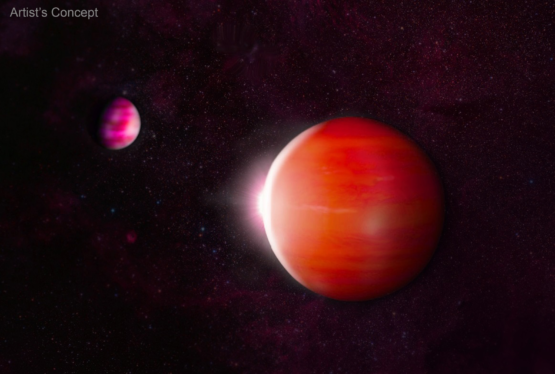
Engineers at L3Harris Technologies in Rochester, New York, have combined all 10 mirrors for NASA’s Nancy Grace Roman Space Telescope. Preliminary tests show the newly aligned optics, collectively called the IOA (Imaging Optics Assembly), will direct light into Roman’s science instruments extremely precisely. This will yield crisp images of space once the observatory launches.
“This is the pre-launch first light, our first time seeing through the entire telescope,” said Joshua Abel, the lead systems engineer for the Roman Space Optical Telescope Assembly at NASA’s Goddard Space Flight Center in Greenbelt, Maryland. “We’re excited to enter the next phase of the project!”
Each of Roman’s mirrors had passed individual tests, but this was the first time they were assessed together. Engineers had to make sure light would move through all of the optics in a tightly controlled way, or else the telescope’s images would appear blurred.
“The telescope’s optics are crucial for all of Roman’s future observations,” said Bente Eegholm, an optical engineer working on Roman’s Optical Telescope Assembly at Goddard. “In addition to the large primary mirror and the secondary mirror, eight relay mirrors serve Roman’s two science instruments. All 10 telescope mirrors need to be aligned to well within the width of a human hair in order to optimize the telescope’s imaging quality such that Roman can fully achieve its science goals.”

The meticulous month-long alignment process involved a series of iterations to bring test images into ever-sharper focus. Once the mirrors were all properly situated, technicians permanently locked them in place. Three of the mirrors will still be movable in space thanks to actuators – mechanisms that control the mirrors’ positions – which will allow astronomers to fine-tune the alignment even further once Roman begins its observations.
The IOA’s vision test establishes a baseline for upcoming vibration and acoustic tests. Engineers will compare measurements from before and after those tests to make sure the optics will withstand the strong shaking and intense sound waves during launch.
After that, the IOA will have a final “eye” exam – this time in vacuum conditions at its cold operational temperature. Materials expand and contract with temperature shifts, and Roman’s optics will go from room temperature conditions on Earth to a frigid 9 degrees Fahrenheit (minus 13 degrees Celsius) in space.
“Our prediction of the small change we expect to see going from ambient to these colder temperatures is very important,” Abel said. The test will also measure the IOA’s performance in extremely low pressure to assess how it will operate in the vacuum of space.
“The joint team from L3Harris and NASA has fully achieved the goals of the test,” said Scott Smith, Roman telescope manager at Goddard. “The technicians and engineers have executed a successful optical test with precision and excellence while maintaining their commitments to schedule.”
The entire Optical Telescope Assembly, of which the IOA is a core component, is expected to be complete and delivered to Goddard this fall.
For more information about the Roman Space Telescope visit: www.roman.gsfc.nasa.gov or www.nasa.gov/roman. To virtually tour an interactive version of the telescope, visit: https://roman.gsfc.nasa.gov/interactive/.
By Ashley Balzer
NASA’s Goddard Space Flight Center, Greenbelt, Md.
Media contact:
Claire Andreoli
NASA’s Goddard Space Flight Center, Greenbelt, Md.
claire.andreoli@nasa.gov
301-286-1940




